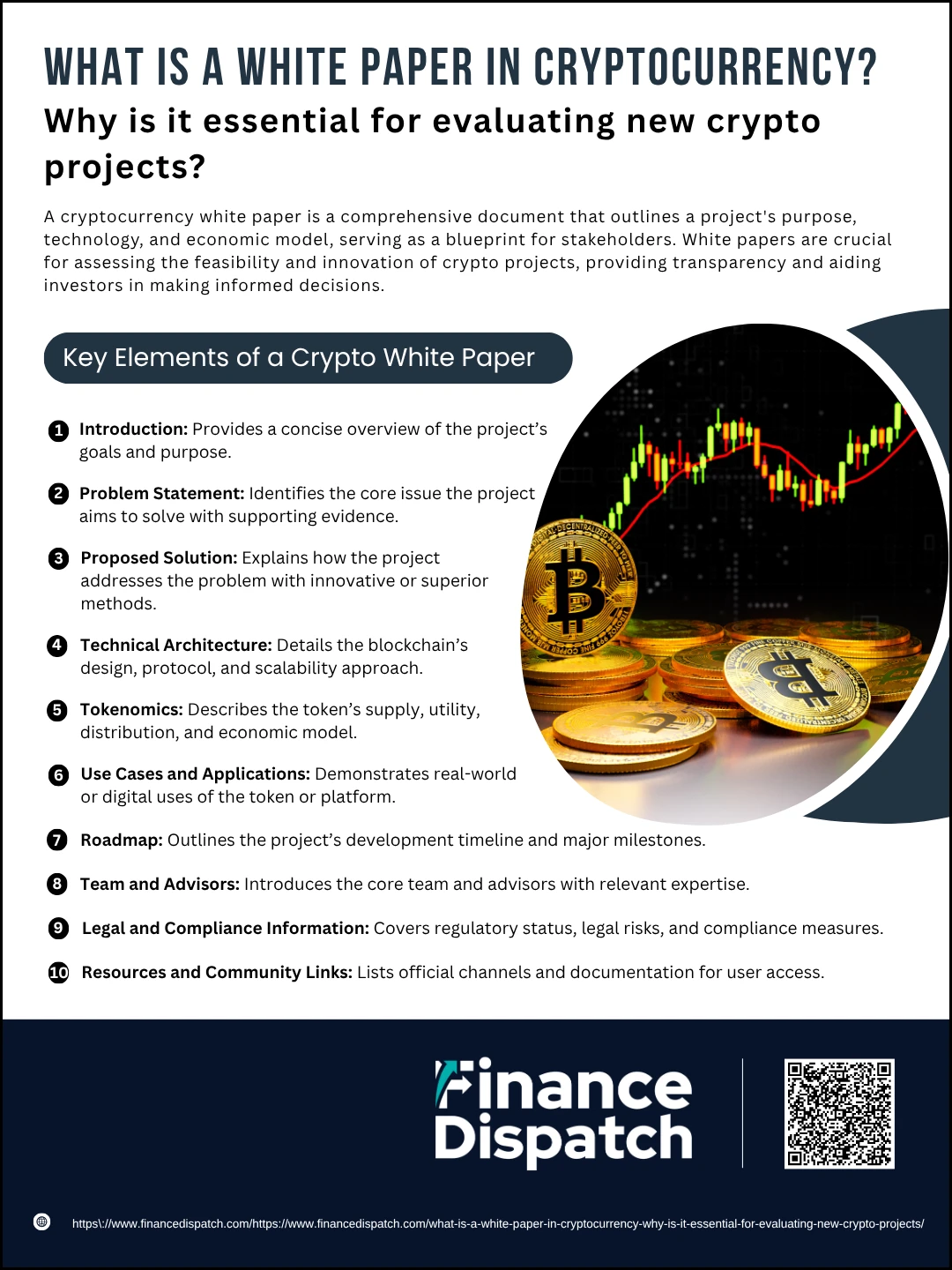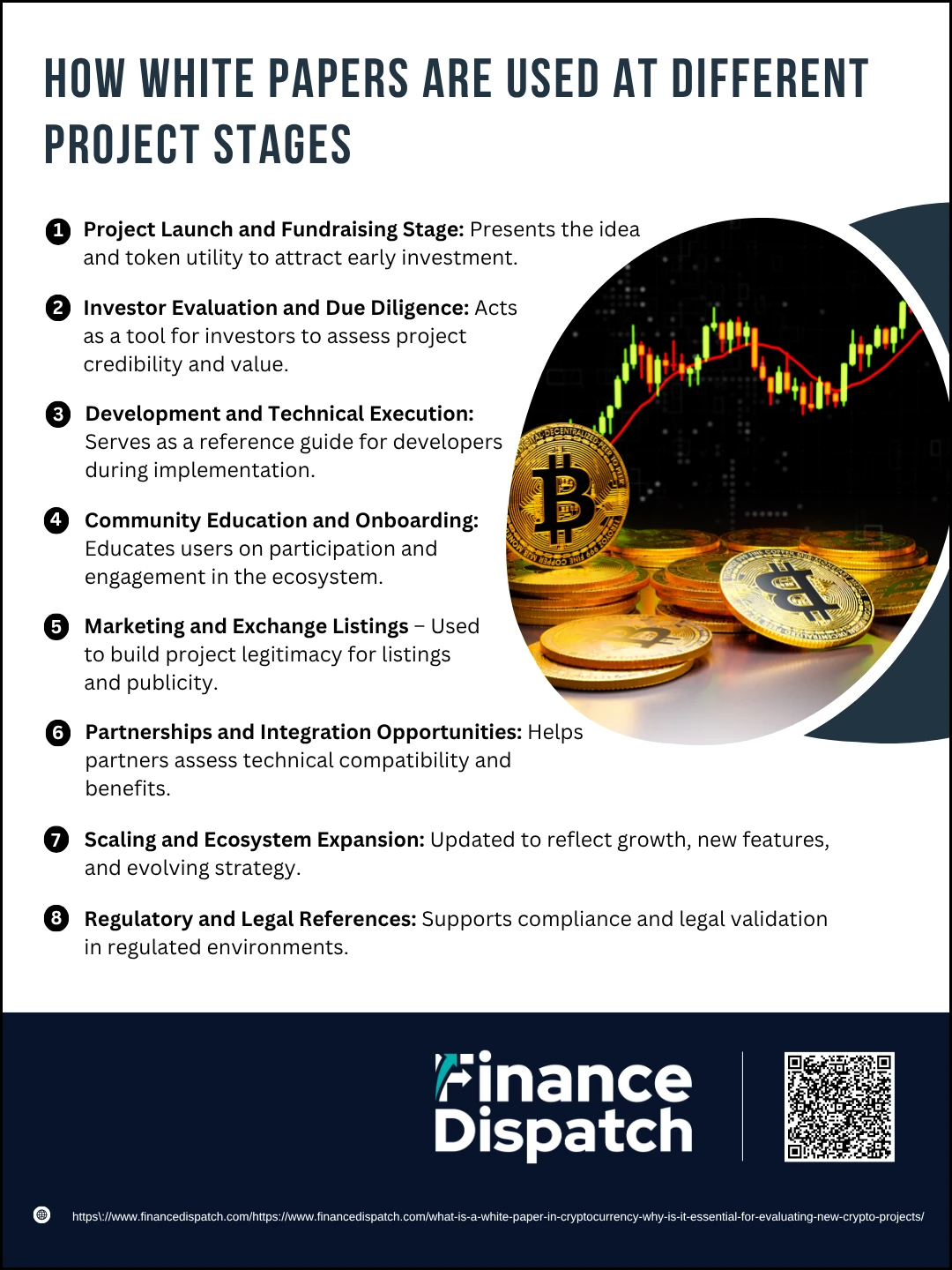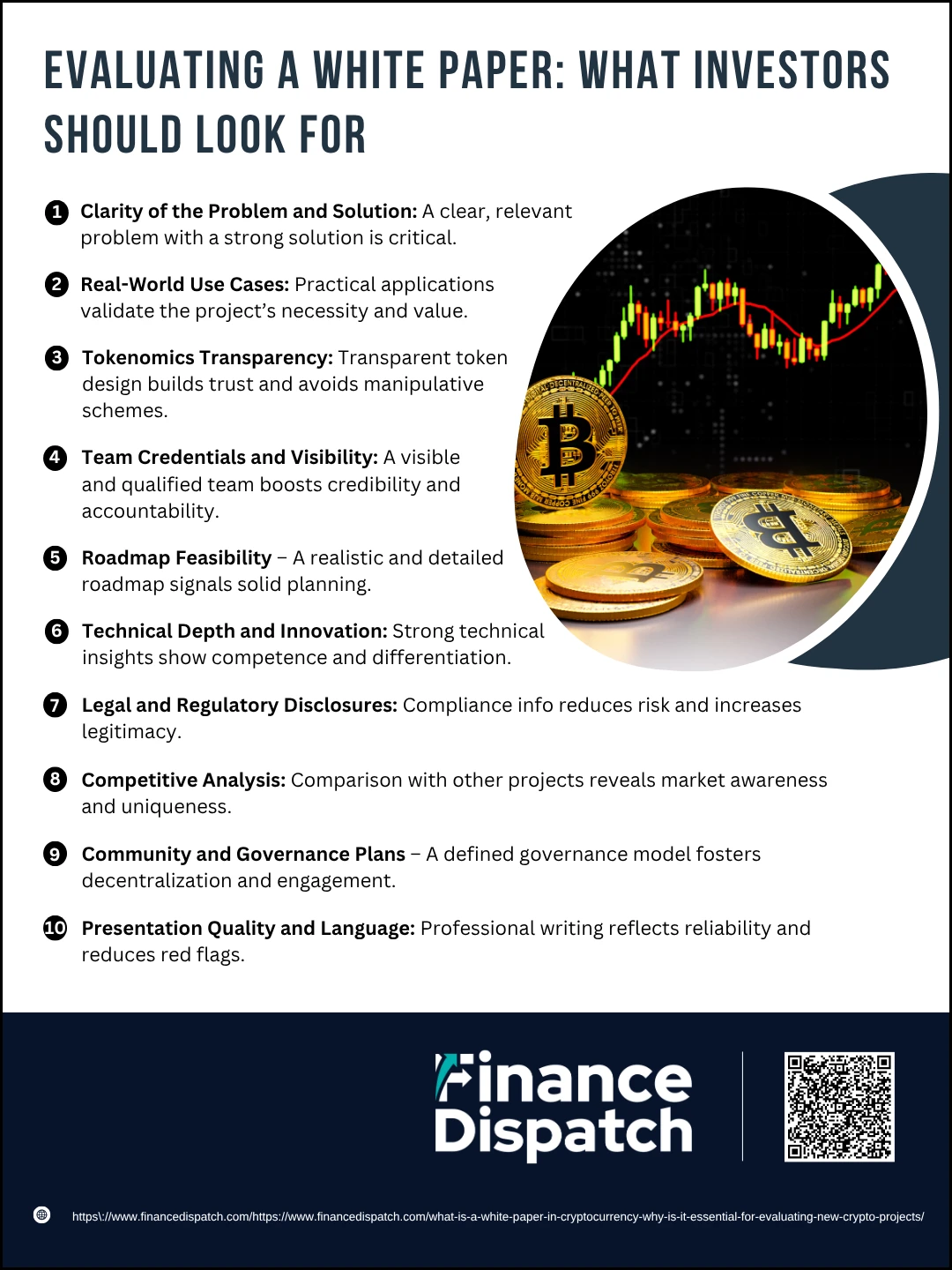In the fast-paced world of cryptocurrency, a white paper serves as the blueprint of a blockchain project—outlining its vision, technology, goals, and economic model in a structured and transparent manner. Whether you’re an investor, developer, or simply curious about a new crypto venture, the white paper is the first and most critical document to assess its legitimacy and potential. This article explores what a crypto white paper is, why it matters, and how it can guide you in making informed decisions when evaluating emerging blockchain projects.
What is a White Paper in Cryptocurrency?
A white paper in cryptocurrency is a comprehensive document published by the creators of a blockchain project to communicate its purpose, technical design, and long-term vision. It typically outlines the problem the project aims to solve, the proposed solution, the underlying technology, tokenomics, and roadmap. Unlike promotional materials, a white paper is intended to provide transparent, factual, and in-depth insights, helping potential investors, developers, and users evaluate the project’s feasibility and value. It serves as both a technical guide and a strategic proposal, forming the foundation for trust, funding, and community engagement in the crypto ecosystem.
White Paper vs. Roadmap vs. Litepaper
While all three—white paper, roadmap, and litepaper—are important documents in the cryptocurrency space, they serve distinct purposes and audiences. The white paper offers a deep technical and strategic explanation of a crypto project. In contrast, the roadmap outlines the project’s development timeline and milestones, and the litepaper is a simplified version of the white paper designed for broader, non-technical audiences. Understanding their differences is key to evaluating a project thoroughly.
| Feature | White Paper | Roadmap | Litepaper |
| Purpose | Comprehensive explanation of the project | Timeline of goals, milestones, and deliverables | Concise summary of the project’s highlights |
| Audience | Investors, developers, analysts | General public, investors | Casual readers, new investors |
| Content Depth | Detailed technical, economic, and strategic information | Brief descriptions of phases and dates | High-level overview with minimal technical details |
| Length | 20–50+ pages | 1–3 pages or visual timeline | Around 5–10 pages |
| Use Case | Fundraising, technical validation, community building | Tracking progress and aligning expectations | Quick understanding and promotional use |
| Update Frequency | Periodically updated after major changes | Frequently updated as goals evolve | Occasionally updated for outreach or rebranding |
 Key Elements of a Crypto White Paper
Key Elements of a Crypto White Paper
A well-crafted crypto white paper serves as the foundation for any successful blockchain project, offering a transparent and structured presentation of its goals, technology, and economic model. For investors, developers, and the community, understanding the core components of a white paper is essential to evaluate its feasibility and long-term value. Below are the key elements every quality crypto white paper should include:
1. Introduction
The introduction should quickly capture the reader’s interest by summarizing the project’s goals, vision, and the broader context of its existence. It gives a high-level overview of what the project is, what problem it intends to solve, and why it is needed now.
2. Problem Statement
This section dives into the specific pain points or inefficiencies in the market or technology space the project wants to improve. It should be supported by data, case studies, or industry trends that validate the existence and urgency of the problem.
3. Proposed Solution
Here, the white paper explains how the project solves the identified problem through its technology or concept. This section should clearly show how the solution is better or more innovative than existing alternatives, with technical or functional differentiators.
4. Technical Architecture
This part provides the technical framework of the project, including its blockchain protocol (e.g., Proof-of-Stake or Proof-of-Work), smart contract use, scalability approach (Layer 2, sharding, etc.), interoperability features, and overall system design. It helps technical readers assess feasibility and innovation.
5. Tokenomics
One of the most critical sections for investors, this outlines everything related to the project’s token: supply, allocation, utility, rewards, burning mechanisms, inflation or deflation models, and vesting periods. A clear tokenomics model ensures transparency and trust.
6. Use Cases and Applications
A credible project must demonstrate real-world or digital utility. This section explains how the token or platform will be used in practice—whether in DeFi, gaming, identity verification, NFTs, supply chain, or other sectors. Strong use cases indicate demand and long-term relevance.
7. Roadmap
The roadmap charts the project’s planned development across phases—usually broken down into quarters or years. It should highlight major deliverables such as testnet/mainnet launches, platform features, partnerships, marketing phases, and community growth initiatives. A well-defined roadmap shows direction and commitment.
8. Team and Advisors
Trust in a project often starts with its people. This section lists key team members, their backgrounds, technical expertise, and any past successes. It may also include advisors and partners who lend credibility and experience, especially in crypto, tech, or finance sectors.
9. Legal and Compliance Information
Given the regulatory scrutiny in crypto, this section explains where the project is registered, whether it follows KYC/AML protocols, and if the token complies with securities laws. It should also disclose any potential legal risks and how they are being mitigated.
10. Resources and Community Links
At the end, readers should find links to the official website, social media channels (e.g., Twitter, Telegram, Discord), technical documentation (e.g., GitHub), and the downloadable white paper version. These resources help users stay informed and engaged.
 How White Papers are used at Different Project Stages
How White Papers are used at Different Project Stages
A crypto white paper plays a far more dynamic role than simply introducing a project to the world. It acts as the central reference document across every stage of the project’s lifecycle—from concept and fundraising, through active development and community engagement, to scaling, partnerships, and regulatory communication. By understanding how white papers evolve and function over time, stakeholders can better gauge a project’s transparency, adaptability, and long-term vision.
1. Project Launch and Fundraising Stage
In the early stage, the white paper is used to introduce the idea, showcase the project’s innovation, and attract initial funding. It highlights the market gap, the solution the project offers, and how the token fits into the ecosystem. For ICOs, IDOs, or IEOs, it becomes the primary document investors rely on to decide whether to support the initiative financially.
2. Investor Evaluation and Due Diligence
Both institutional and individual investors use white papers for due diligence before committing funds. They scrutinize the tokenomics, team credentials, market analysis, and competitive positioning. A strong white paper answers essential investor questions about risk, scalability, revenue potential, and long-term sustainability.
3. Development and Technical Execution
Once funding is secured, developers turn to the white paper as a technical manual. It contains architectural plans, protocol specifications, consensus models, and system behavior details necessary for building smart contracts, wallets, and blockchain infrastructure. It serves as a guiding document for aligning development with original objectives.
4. Community Education and Onboarding
For new users, the white paper explains the project’s goals, how the platform works, and how to engage with the ecosystem. It educates the community about staking, governance, rewards, and utility, helping them make informed decisions and encouraging active participation.
5. Marketing and Exchange Listings
During outreach and listing processes, the white paper is shared with exchanges and potential backers as a credibility document. A well-written and technically sound white paper increases the chances of being listed on major exchanges and gaining traction through press coverage or influencer reviews.
6. Partnerships and Integration Opportunities
Blockchain projects often collaborate with DeFi platforms, NFT marketplaces, or enterprise services. The white paper allows partners to assess how the project aligns with their ecosystem, its interoperability, scalability, and potential synergies. It helps attract integrations, joint ventures, and technical alliances.
7. Scaling and Ecosystem Expansion
As the project evolves, new features, token mechanics, or governance changes are implemented. The white paper is updated to reflect these changes—releasing versions like V2.0 or V3.0 to align stakeholders with current strategies. For example, Ethereum’s transition from Proof-of-Work to Proof-of-Stake was accompanied by updated documentation.
8. Regulatory and Legal References
In regions where crypto is regulated, a clear and compliant white paper can help demonstrate that the token is not a security, explain its legal structure, or show compliance with AML/KYC norms. Regulators or legal auditors may examine the white paper during token registration or fundraising scrutiny.
 Evaluating a White Paper: What Investors Should Look For
Evaluating a White Paper: What Investors Should Look For
In the world of cryptocurrency investing, a white paper is often the only window into the true intentions, mechanics, and potential of a blockchain project. While marketing campaigns may generate buzz, it’s the white paper that reveals whether the foundation of the project is credible, transparent, and technically sound. For investors, knowing how to critically evaluate a white paper can make the difference between spotting a promising opportunity and falling for an overhyped scheme. Below are the key elements every investor should assess before putting money into a crypto project.
1. Clarity of the Problem and Solution
A good white paper should clearly define the problem the project aims to solve and explain how its solution stands out from existing alternatives. If the problem is vague or the solution appears unnecessary, that’s a red flag.
2. Real-World Use Cases
Look for specific applications of the project’s technology. Does it have a practical use in DeFi, gaming, identity, or supply chain? A clear use case demonstrates demand and viability beyond speculation.
3. Tokenomics Transparency
The document should clearly explain how the token works within the ecosystem, including supply, distribution, lockup periods, utility, and inflation/deflation mechanics. Poorly explained or unfair tokenomics can signal a scam or pump-and-dump setup.
4. Team Credentials and Visibility
Check whether the white paper includes details about the team’s qualifications, blockchain experience, and background. Anonymous or unverifiable teams reduce accountability and increase risk.
5. Roadmap Feasibility
Assess the timeline and milestones laid out in the roadmap. Are the goals realistic and achievable within the stated time frame? An overly ambitious or vague roadmap often indicates poor planning or lack of substance.
6. Technical Depth and Innovation
Evaluate the technology section. Does it explain how the blockchain works, what consensus mechanism is used, and what sets it apart? Technical depth shows the team understands what they’re building and how it fits into the broader crypto ecosystem.
7. Legal and Regulatory Disclosures
Reputable projects acknowledge legal considerations. Check if the white paper explains regulatory compliance, the jurisdiction of incorporation, and whether the token qualifies as a utility or security.
8. Competitive Analysis
A strong white paper typically references other projects and explains how it improves upon them. Lack of competitor insight can indicate the team hasn’t done thorough market research or lacks originality.
9. Community and Governance Plans
Does the project allow for user participation in governance? Are staking, voting, or DAO mechanisms mentioned? A strong governance structure encourages long-term engagement and decentralization.
10. Presentation Quality and Language
Finally, evaluate the writing style and structure. Poor grammar, vague buzzwords, or excessive hype are signs of carelessness or manipulation. A professional, balanced tone reflects credibility and attention to detail.
Red Flags in a Crypto White Paper
While a well-written white paper can inspire trust and interest in a crypto project, many scams and poorly planned initiatives hide behind flashy language and vague promises. For investors and enthusiasts, learning to spot the warning signs early is crucial to avoiding costly mistakes. Below are some common red flags to watch for when reviewing a cryptocurrency white paper:
1. Vague Problem Definition
If the white paper fails to clearly define the problem the project is solving, it likely lacks a real-world purpose or market need.
2. Overuse of Buzzwords Without Substance
Terms like “revolutionary,” “disruptive,” or “next-generation” without detailed explanations are often used to mask a lack of technical depth.
3. Unrealistic Promises
Guaranteed returns, instant mass adoption, or exaggerated claims of scalability and speed without evidence are major red flags.
4. Missing or Anonymous Team
If no team members are listed, or if they are difficult to verify, there may be a lack of accountability or intent to deceive.
5. Poorly Explained Tokenomics
A white paper that skips over or briefly mentions token supply, distribution, and utility could be hiding an unsustainable or unfair token model.
6. No Technical Documentation
Absence of technical details such as architecture, consensus mechanism, or smart contract design suggests the project may not be technically viable.
7. Absence of a Roadmap
If there’s no development timeline or future vision presented, it’s difficult to assess the project’s planning or commitment to long-term growth.
8. Lack of Regulatory Clarity
Projects that ignore legal disclosures, especially around token classification, may pose serious compliance risks later on.
9. Typos and Grammar Errors
Frequent mistakes indicate a lack of professionalism and attention to detail—qualities that are essential in technical and financial projects.
10. No Mention of Competition
A white paper that acts like no other solution exists may either be poorly researched or intentionally deceptive.
Examples of Influential White Papers
Some of the most influential white papers in the cryptocurrency space have not only introduced groundbreaking technologies but have also shaped the direction of the entire blockchain industry. The Bitcoin white paper, published in 2008 by the pseudonymous Satoshi Nakamoto, outlined the concept of a decentralized peer-to-peer electronic cash system—introducing the foundational principles of blockchain, cryptographic security, and proof-of-work consensus. Another landmark document is the Ethereum white paper, written by Vitalik Buterin in 2013, which expanded the potential of blockchain beyond simple transactions by introducing smart contracts and decentralized applications (dApps). These white papers did more than just propose new technologies—they established the blueprint for a decentralized digital future, inspiring thousands of subsequent projects to follow suit.
Conclusion
A crypto white paper is far more than just a technical document—it is the foundation upon which trust, innovation, and investment are built. From outlining a project’s vision and technology to guiding development and attracting community support, the white paper plays a central role at every stage of a blockchain project’s life. For investors and stakeholders, knowing how to evaluate a white paper can provide critical insights into a project’s feasibility, integrity, and long-term potential. While a well-crafted white paper can signal opportunity, it’s equally important to remain alert to red flags that may indicate risk. Ultimately, understanding and analyzing white papers is an essential skill for anyone looking to make informed decisions in the ever-evolving world of cryptocurrency.



